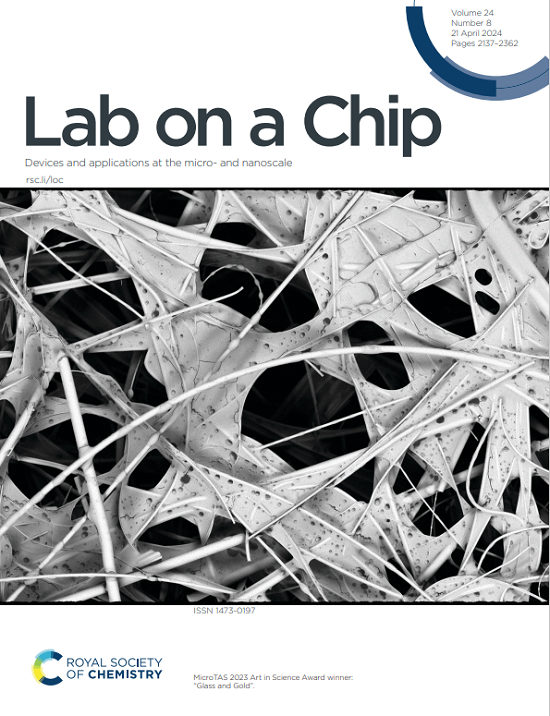“芯片上的流体动力空化”概念的溶栓潜力:对凝块降解的见解
IF 5.4
2区 工程技术
Q1 BIOCHEMICAL RESEARCH METHODS
引用次数: 0
摘要
溶栓是治疗肺栓塞和深静脉血栓形成等血管疾病的必要手段,但目前基于药物的溶栓方法在有效性和安全性方面存在明显的局限性。流体动力空化(HC)通过机械破坏提供无药物的凝块降解。在本研究中,我们使用Clot-on-a-Chip (CoC)平台研究了HC暴露对溶栓的影响。在这方面,丙型肝炎暴露的溶栓潜力通过溶血和纤溶分析进行了评估。此外,还将结果与广泛研究的声空化(AC)进行了比较。根据得到的结果,HC暴露(482 kPa, 120 s)导致血红蛋白释放12.1%,血凝块减少53.4%。相比之下,交流暴露(24 kHz, 50%振幅,30 s)导致1.3倍的质量减少,26.8%的血红蛋白释放,可能是由于额外的热效应。形态学分析显示,HC治疗以压力和时间依赖的方式显著降低红细胞密度。值得注意的是,HC治疗通过溶血和轻微的纤维蛋白溶解有效地侵蚀了血凝块,而AC治疗的血凝块侵蚀主要是由于溶血。HC的溶栓效果与AC相当或更好,提供了更安全、更有针对性的策略。这些发现将促进对空化诱导的血块降解的机制理解,并支持HC在血栓治疗方面的临床潜力。本文章由计算机程序翻译,如有差异,请以英文原文为准。
Thrombolytic Potential of “Hydrodynamic Cavitation on a Chip” Concept: Insights into Clot Degradation
Thrombolysis is essential for treating vascular conditions such as pulmonary embolism and deep vein thrombosis, yet current thrombolytic drug-based approaches have notable limitations in efficacy and safety. Hydrodynamic cavitation (HC) offers drug-free clot degradation through mechanical disruption. In this study, the effects of HC exposure on thrombolysis were investigated using Clot-on-a-Chip (CoC) platform. In this regard, the thrombolytic potential of HC exposure was evaluated by analyses involving hemolysis and fibrinolysis. Furthermore, the results were compared with Acoustic Cavitation (AC), a widely studied alternative. According to the obtained results, HC exposure (482 kPa, 120 s) resulted in 12.1% released hemoglobin and a 53.4% reduction in clot mass. In contrast, AC exposure (24 kHz, 50% amplitude, 30 s) led to a 1.3-fold greater mass reduction with 26.8% released hemoglobin, likely due to additional thermal effects. Morphological analyses revealed that HC treatment significantly reduced red blood cell density in a pressure- and time-dependent manner. Notably, HC treatment effectively eroded blood clots by hemolysis with slight fibrinolysis, whereas clot erosion in AC was primarily due to hemolysis. HC achieved thrombolysis comparable to or better than AC, offering a safer, more targeted strategy. The findings will advance mechanistic understanding of cavitation-induced clot degradation and support HC’s clinical potential for thrombosis treatment.
求助全文
通过发布文献求助,成功后即可免费获取论文全文。
去求助
来源期刊

Lab on a Chip
工程技术-化学综合
CiteScore
11.10
自引率
8.20%
发文量
434
审稿时长
2.6 months
期刊介绍:
Lab on a Chip is the premiere journal that publishes cutting-edge research in the field of miniaturization. By their very nature, microfluidic/nanofluidic/miniaturized systems are at the intersection of disciplines, spanning fundamental research to high-end application, which is reflected by the broad readership of the journal. Lab on a Chip publishes two types of papers on original research: full-length research papers and communications. Papers should demonstrate innovations, which can come from technical advancements or applications addressing pressing needs in globally important areas. The journal also publishes Comments, Reviews, and Perspectives.
 求助内容:
求助内容: 应助结果提醒方式:
应助结果提醒方式:


